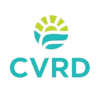2012 Water Quality Objectives Attainment in the Cowichan and Koksilah Rivers

Smorong, D., and Saso, P. 2021. Cowichan River and Koksilah River: Water Quality Objectives Attainment (2012-2014). Environmental Quality Series. Prov. B.C., Victoria B.C.
cowichan_koksilah_river_attainment_report_2012_2014
The Environmental Quality Series are scientific technical reports relating to the understanding and management of B.C.’s air and water resources. The series communicates scientific knowledge gained through air and water environmental impact assessments conducted by BC government, as well as scientific partners working in collaboration with provincial staff. For additional information visit: https://www2.gov.bc.ca/gov/content/environment/air-land-water/water/water-quality/water-quality-monitoring/water-quality-objectives
ISBN: 978-0-7726-7990-1
EXECUTIVE SUMMARY
Water Quality Objectives (WQO’s) were approved for the Cowichan and Koksilah Rivers in 2011 based on data collected in 2002, 2003, and 2008 (Obee and Epps, 2011). Attainment monitoring occurred from May 2012 through December 2014. Sampling was completed at ten sites on the Cowichan river mainstem, 15 sites in the lower Cowichan watershed including tributaries and storm drains, and at 17 sites in the Koksilah River watershed. Attainment data and changes that have occurred in the watershed between 2008 and 2014 are presented in this report.
Parameters that failed to meet WQO’s in the Cowichan River watershed were: E. coli., dissolved oxygen, turbidity, total phosphorus, total copper, total zinc and temperature. WQO’s were met in the Cowichan River watershed for: total suspended solids, ammonia, total lead.
Parameters that failed to meet WQO’s in the Koksilah River watershed were: E. coli, dissolved oxygen, total suspended solids, turbidity, ammonia, total phosphorus, total copper, and total zinc. Only total lead and temperature met the WQO’s in the Koksilah River watershed.
Recommendations to monitor and improve water quality in the watersheds include: continuing regular attainment monitoring; targeting additional sites for monitoring, especially during summer low-flow season; and ensuring that data are collected for all parameters for which there are objectives.
Download the report here.
 Email
Email



